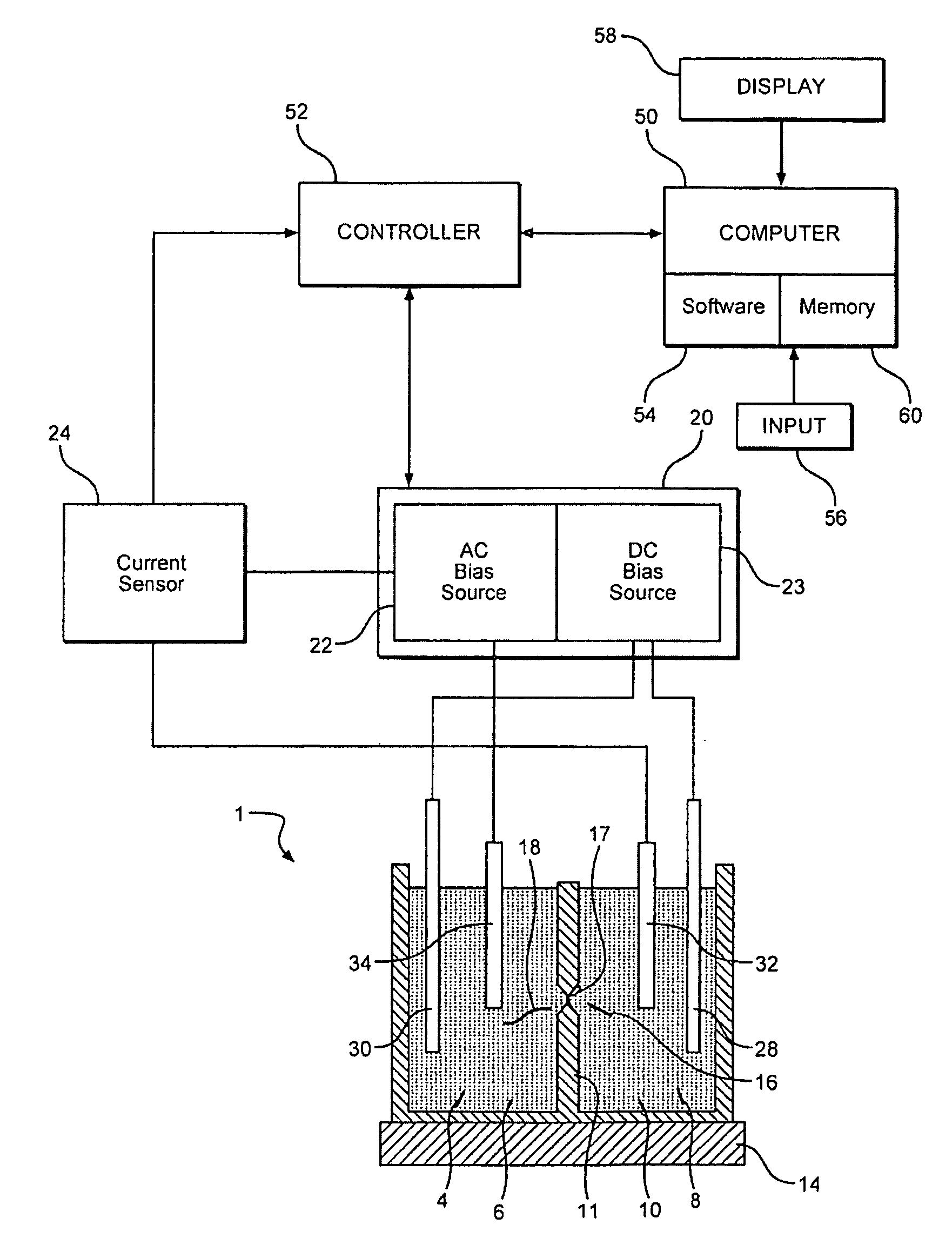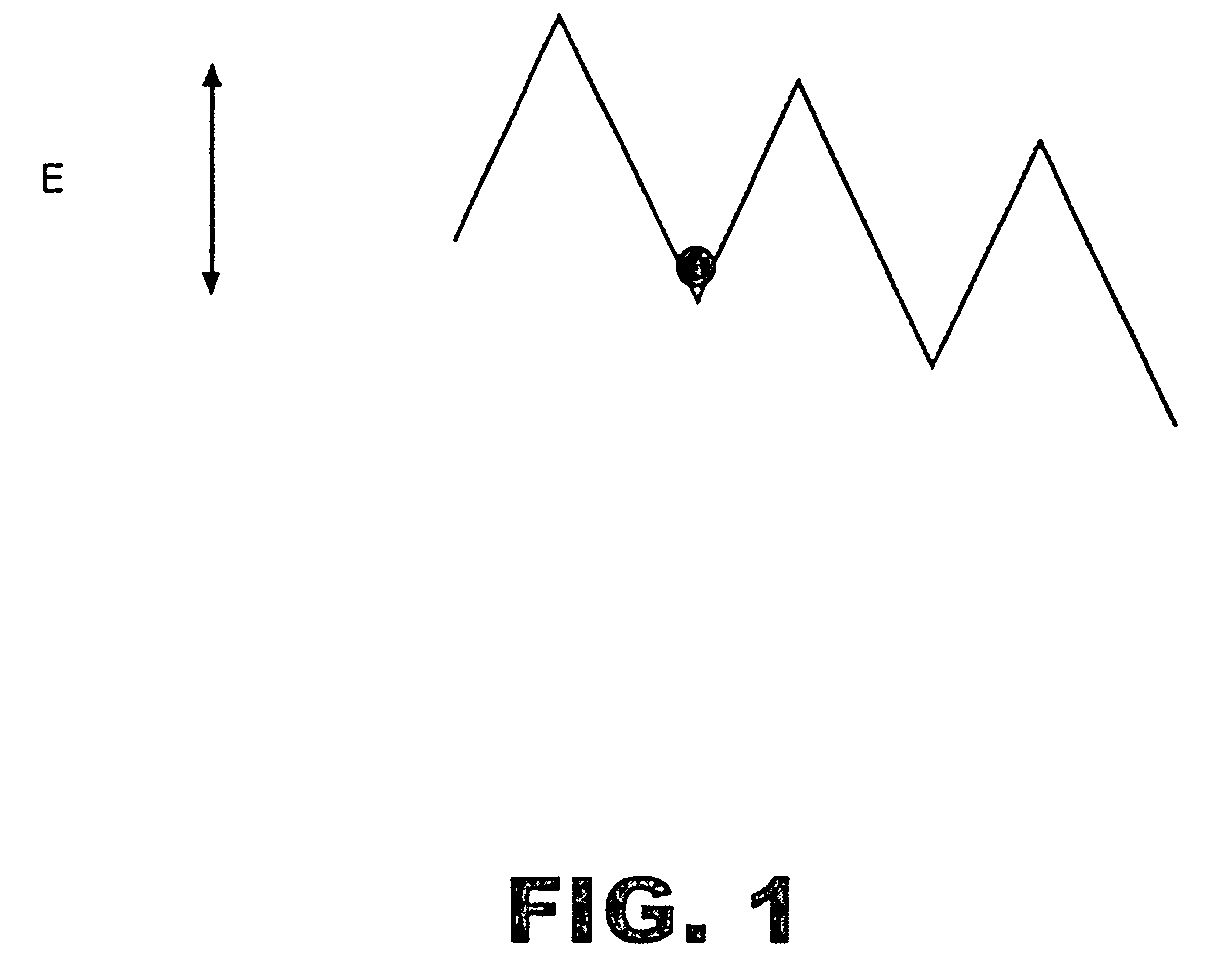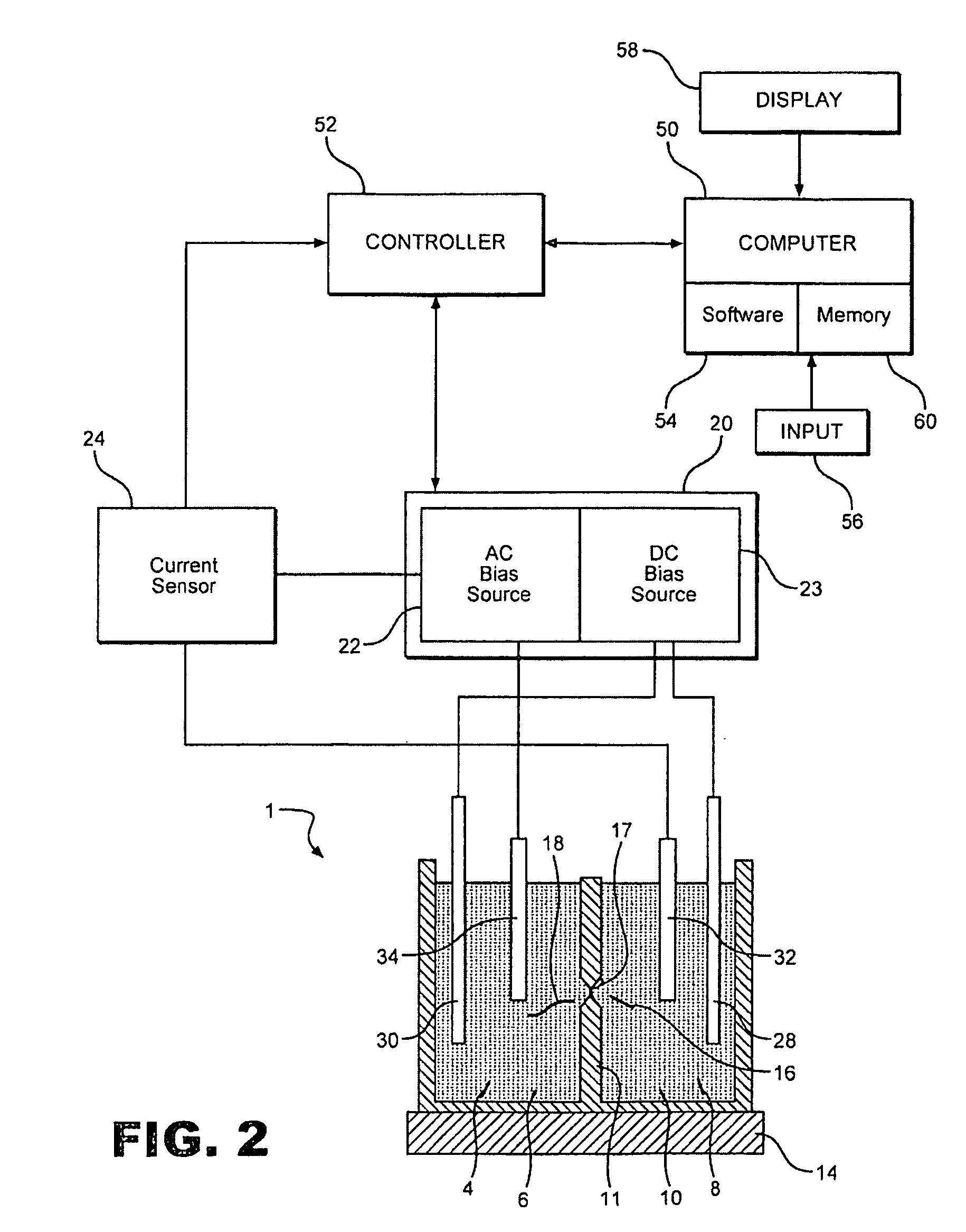System and Method to Improve Accuracy of a Polymer
a polymer and sequencing technology, applied in the field of sequencing, to achieve the effect of reducing the diffusional motion of a polymer, and optimizing the overall sequencing accuracy of the overall system
- Summary
- Abstract
- Description
- Claims
- Application Information
AI Technical Summary
Benefits of technology
Problems solved by technology
Method used
Image
Examples
Embodiment Construction
[0026]With initial reference to FIG. 2, a measurement device or sensing system 1 is utilized in accordance with the present invention in order to preserve the order in which monomeis are measured during sequencing. Sensing system 1 includes a first fluid chamber or electrolyte bath 4 within which is provided a first solution or electrolyte 6, and a second fluid chamber or sensing volume 8 provided with a second electrolyte 10. Sensing volume 8 is separated from electrolyte bath 4 by a barrier structure 11, which includes a thinned region 16 formed therein into which is incorporated a nanopore or nano-scale orifice 17 that provides a fluid path connecting first and second electrolytes 6 and 10. If region 16 is a solid material, orifice 17 can be formed by a variety of fabrication methods known to those skilled in the art. Alternatively, orifice 17 could be a biological entity, such as a protein pore or ion channel, and region 16 could be a biocompatible material chosen to incorporate...
PUM
| Property | Measurement | Unit |
|---|---|---|
| diameter | aaaaa | aaaaa |
| tm | aaaaa | aaaaa |
| velocity | aaaaa | aaaaa |
Abstract
Description
Claims
Application Information
 Login to View More
Login to View More - R&D
- Intellectual Property
- Life Sciences
- Materials
- Tech Scout
- Unparalleled Data Quality
- Higher Quality Content
- 60% Fewer Hallucinations
Browse by: Latest US Patents, China's latest patents, Technical Efficacy Thesaurus, Application Domain, Technology Topic, Popular Technical Reports.
© 2025 PatSnap. All rights reserved.Legal|Privacy policy|Modern Slavery Act Transparency Statement|Sitemap|About US| Contact US: help@patsnap.com



